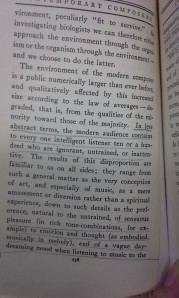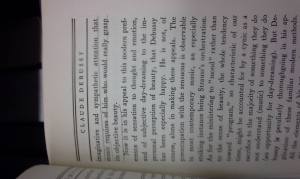For this assignment, I decided to use the category that I had failed to find information for in the Book Traces assignment: music. I plugged in names of Nineteenth Century composers such as Beethoven, Chopin, and Tchaikovsky, but none of the comparisons were significant enough for me to write about. I then decided to steer away from composers and look more into some instruments. I knew that this time period was incredibly important in the field of music, so I figured the instruments had to have seen some interesting developments. I plugged the words “trumpet,” “flute,” and “piano” into the Ngram Viewer, with the default settings. I saw that at first, the word “trumpet” was significantly more popular than either “flute” or “piano.” Flute was low but stayed fairly consistent until the end of the century. The most interesting increase, however, was definitely in the word “piano.” Its frequency more than tripled between the years 1850 and 1900. It went from least popular of the three to most popular by far. Some quick research explained that throughout the Nineteenth Century, the piano became more and more affordable, as companies began to mass produce the instruments. This allowed for many families to purchase pianos for their homes.
Some research on the flute showed that in about 1847, a man named Theobald Boehm invented a new type of flute that became the premise for the instrument we use today. Toward the end of the century, workshops began to adopt and modify Boehm’s design, and it was used in orchestras all across Europe and America. This explains the increase in the word “flute” from about 1887 to 1898.
As for the trumpet, its graph was fairly consistent throughout, and there was not much information on the Nineteenth Century trumpet alone. I did find out that around that time, similar to the flute and piano, the basis for the modern day trumpet was invented, but it was in the key of F, rather than today’s standard B♭. On the graph around 1810, there is a rather large spike, but I could not find any information that explained it.
I found this to be an interesting assignment because it relies on us making assumptions, which is what historians are forced to do when they are researching various trends on graphs like our Ngrams. This tool could definitely be valuable for anyone who is researching a topic from many years ago. Google has scanned millions of books into its system, which makes the research incredibly accurate. Also, I got to learn about the instruments I enjoy, which was fun.
Works Cited
“The History and Development of the Modern Piano.” Renner USA. N.p., n.d. Web. 07 Oct. 2015.
Estrella, Espie. “History of the Trumpet.” About Education. About.com, n.d. Web. 07 Oct. 2015.
“Theobald Boehm (1794-1881).” FluteHistory.com. Flutehistory.com, n.d. Web. 07 Oct. 2015.
“Nineteenth-century Flutes.” FluteHistory.com. Flutehistory.com, n.d. Web. 07 Oct. 2015.


